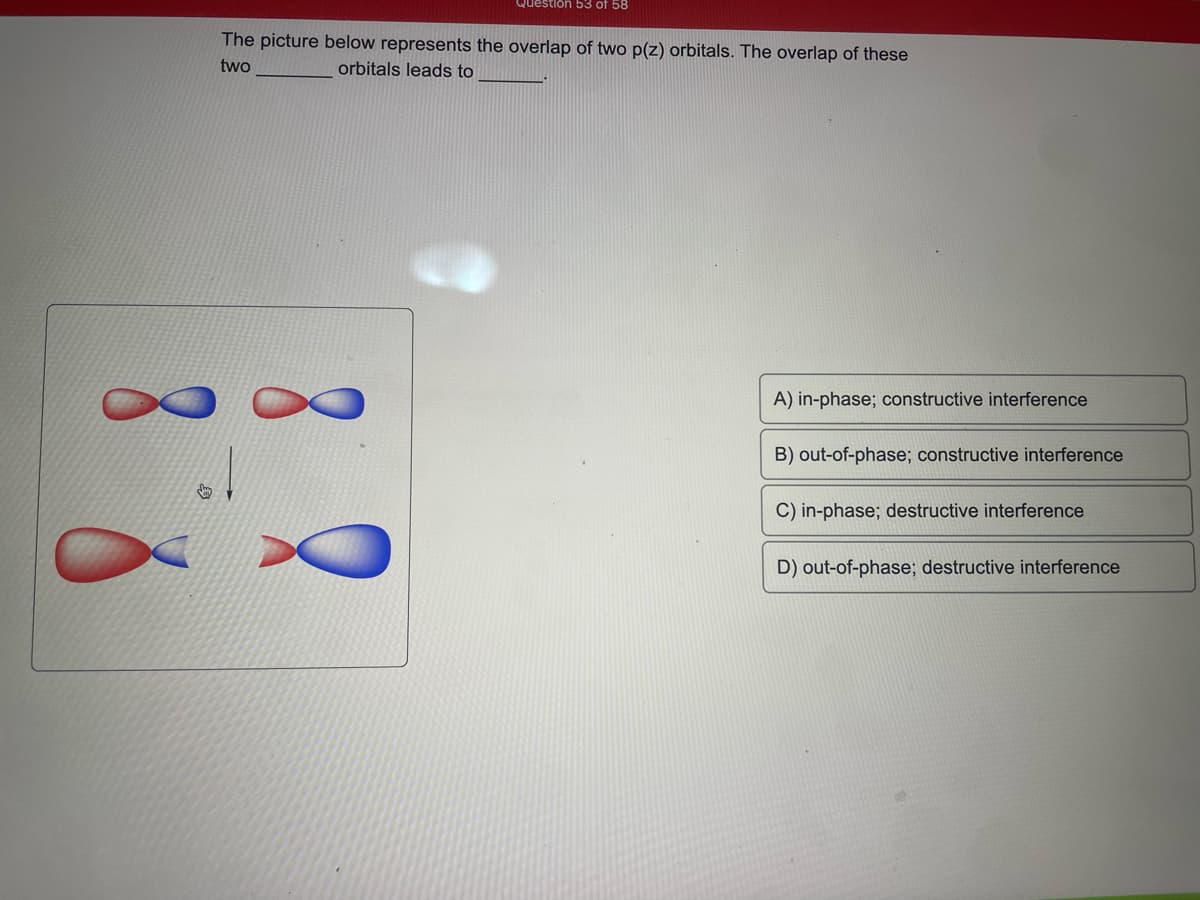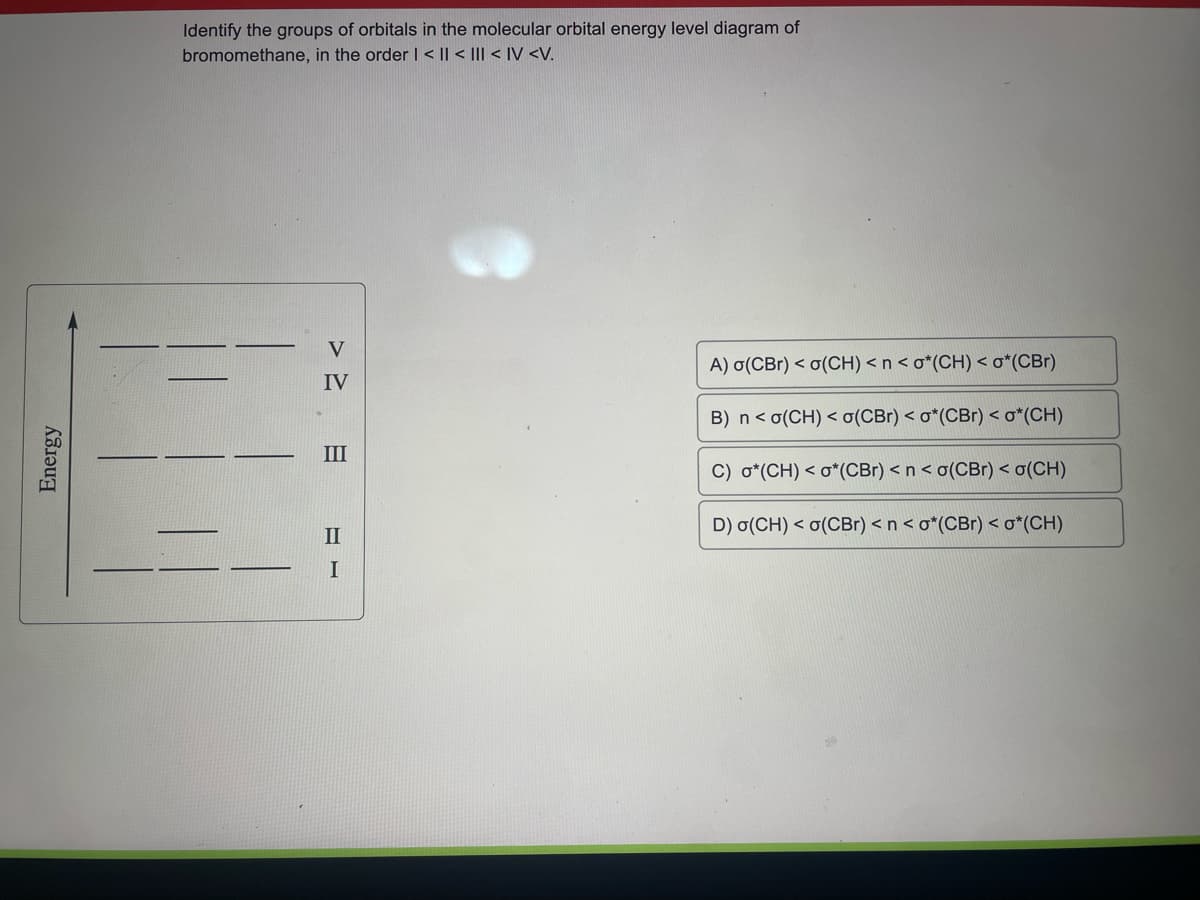The picture below represents the overlap of two p(z) orbitals. The overlap of these two orbitals leads to A) in-phase; constructive interference B) out-of-phase; constructive interference C) in-phase; destructive interference D) out-of-phase; destructive interference
The picture below represents the overlap of two p(z) orbitals. The overlap of these two orbitals leads to A) in-phase; constructive interference B) out-of-phase; constructive interference C) in-phase; destructive interference D) out-of-phase; destructive interference
Principles of Modern Chemistry
8th Edition
ISBN:9781305079113
Author:David W. Oxtoby, H. Pat Gillis, Laurie J. Butler
Publisher:David W. Oxtoby, H. Pat Gillis, Laurie J. Butler
Chapter6: Quantum Mechanics And Molecular Structure
Section: Chapter Questions
Problem 30P: The molecular ion HeH+ has an equilibrium bond length of 0.774 Å. Draw an electron correlation...
Related questions
Question
all one question, answer both

Transcribed Image Text:53 of 58
The picture below represents the overlap of two p(z) orbitals. The overlap of these
orbitals leads to
two
A) in-phase; constructive interference
B) out-of-phase; constructive interference
C) in-phase; destructive interference
D) out-of-phase; destructive interference

Transcribed Image Text:Energy
Identify the groups of orbitals in the molecular orbital energy level diagram of
bromomethane, in the order | < || < III < IV <V.
V
IV
III
II
I
A) o(CBr) < o(CH) < n < o*(CH) < o*(CBR)
B) n<o(CH) < o(CBr) < o*(CBr) < o*(CH)
C) o*(CH) < o*(CBr) < n < o(CBr) < o(CH)
D) o(CH) < o(CBr) < n < o*(CBr) < o*(CH)
Expert Solution
This question has been solved!
Explore an expertly crafted, step-by-step solution for a thorough understanding of key concepts.
This is a popular solution!
Trending now
This is a popular solution!
Step by step
Solved in 3 steps with 2 images

Knowledge Booster
Learn more about
Need a deep-dive on the concept behind this application? Look no further. Learn more about this topic, chemistry and related others by exploring similar questions and additional content below.Recommended textbooks for you

Principles of Modern Chemistry
Chemistry
ISBN:
9781305079113
Author:
David W. Oxtoby, H. Pat Gillis, Laurie J. Butler
Publisher:
Cengage Learning

Organic Chemistry: A Guided Inquiry
Chemistry
ISBN:
9780618974122
Author:
Andrei Straumanis
Publisher:
Cengage Learning


Principles of Modern Chemistry
Chemistry
ISBN:
9781305079113
Author:
David W. Oxtoby, H. Pat Gillis, Laurie J. Butler
Publisher:
Cengage Learning

Organic Chemistry: A Guided Inquiry
Chemistry
ISBN:
9780618974122
Author:
Andrei Straumanis
Publisher:
Cengage Learning
